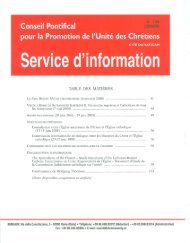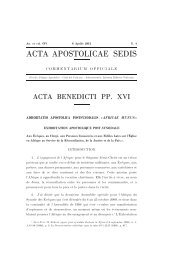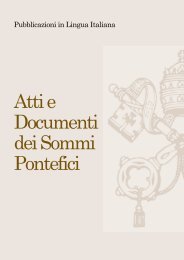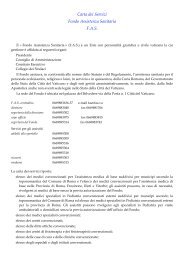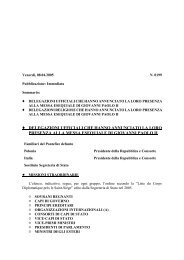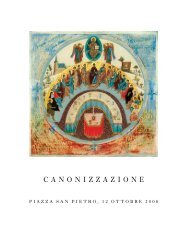ACTA APOSTOLICAE SEDIS - La Santa Sede
ACTA APOSTOLICAE SEDIS - La Santa Sede
ACTA APOSTOLICAE SEDIS - La Santa Sede
Sie wollen auch ein ePaper? Erhöhen Sie die Reichweite Ihrer Titel.
YUMPU macht aus Druck-PDFs automatisch weboptimierte ePaper, die Google liebt.
684<br />
Acta Apostolicae Sedis – Commentarium Officiale<br />
his Dáil speech of 20 July 2011 and in the motion passed by Dáil Éireann on<br />
the same day and by Seanad Éireann a week later. It also provides a more<br />
complete account of the Church’s legislation on child sexual abuse than<br />
that described in the Cloyne Report, and states clearly the Holy See’s view<br />
regarding cooperation between Church and civil authorities.<br />
1. Issues regarding the Holy See raised by the Cloyne Report<br />
Having carefully examined the content of the Cloyne Report, the Holy See<br />
concludes that the criticisms and accusations made against it are based primarily<br />
on the Report’s assessment of the letter addressed to the members of<br />
the Irish Bishops’ Conference on 31 January 1997 by the then Apostolic<br />
Nuncio, Archbishop Luciano Storero, concerning the response of the Congregation<br />
for the Clergy to the 1996 document entitled Child Sexual Abuse:<br />
Framework for a Church Response, generally known as the Framework Document.<br />
This letter is quoted extensively in the earlier Dublin Report (7.13-7.14)<br />
and was the object of considerable public attention in January 2011. The<br />
Holy See acknowledges, moreover, that, taken out of context, the letter could<br />
be open to misinterpretation, giving rise to understandable criticism. In what<br />
follows, an explanation of that context is offered, including, crucially, explanation<br />
of the knowledge that the letter presupposes of the workings of the<br />
Church and the relationship between episcopal conferences and the Holy See.<br />
The Cloyne Report quotes the text of Archbishop Storero’s letter and<br />
offers an assessment. In chapter 1 the Report quotes excerpts from the letter<br />
to the effect that the Congregation for the Clergy informed the Bishops that<br />
the document in question was “not an official document of the Episcopal Conference<br />
but merely a study document” and that it contained “procedures and<br />
dispositions which appear contrary to canonical discipline and which, if applied,<br />
could invalidate the acts of the same Bishops who are attempting to put a stop to<br />
these problems.If such procedures were to be followed by the Bishops and there<br />
were cases of eventual hierarchical recourse lodged at the Holy See, the results<br />
could be highly embarrassing and detrimental to those same Diocesan authorities.<br />
In particular, the situation of ‘mandatory reporting’ gives rise to serious reservations<br />
of both a moral and canonical nature” (1.18).<br />
The Commission states its view that “This effectively gave individual Irish<br />
bishops the freedom to ignore the procedures which they had agreed and gave<br />
comfort and support to those who, like Monsignor O’Callaghan, dissented from


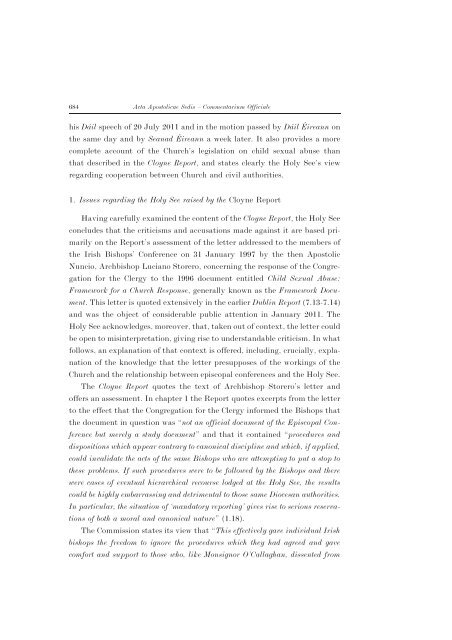

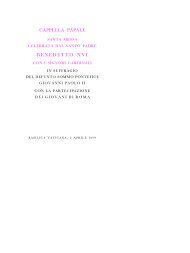
![AAS 01 [1909] - La Santa Sede](https://img.yumpu.com/51456523/1/180x260/aas-01-1909-la-santa-sede.jpg?quality=85)
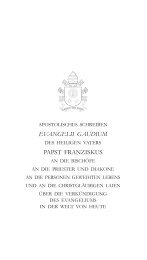
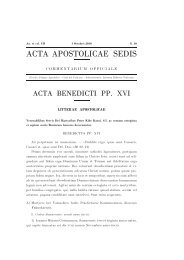
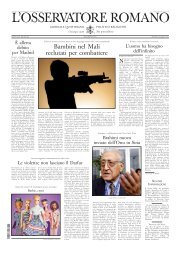
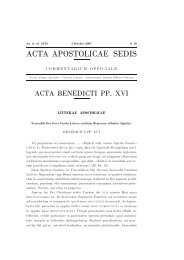
![AAS 20 [1928] - La Santa Sede](https://img.yumpu.com/19772818/1/180x260/aas-20-1928-la-santa-sede.jpg?quality=85)
